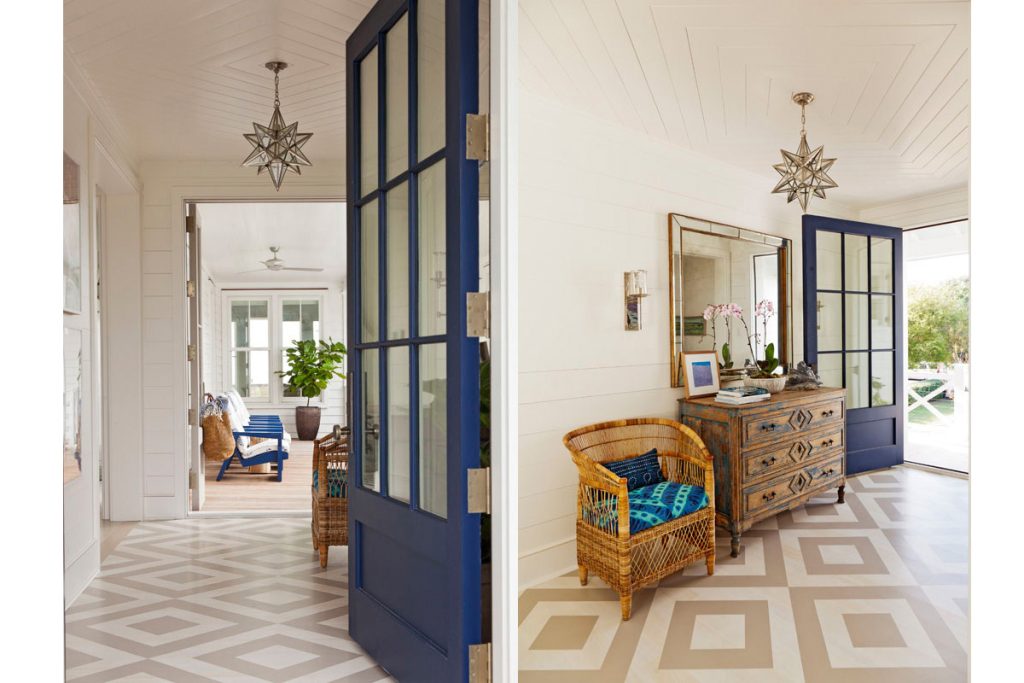Concrete is a popular choice for flooring, foundations, and a host of other applications. It’s not a new product; the Romans used a lot of concrete in their many construction projects. In most cases, concrete offers a non-slip finish which is both practical and durable.
However, if you want the smoothest possible finish then the best option is polished concrete. Unfortunately, while this is a practical and good-looking choice, it is also a slippery one when wet. That means it poses an accident risk. You need to take steps to reduce this slipperiness and protect those walking on the floor.

Fortunately, there are several options worth considering.
Add An Epoxy Coating
Potentially the best option is to get a specialist in epoxy floor coatings to administer a layer of epoxy on top of the concrete flooring. This is a good way of laying epoxy and you get the benefit of a very durable floor. Epoxy is waterproof, stain-resistant, and durable. You can drop heavy items onto it without damaging this type of flooring.
It can be added to existing concrete and is available in a wide range of colours, allowing you to create your preferred look almost effortlessly.
Best of all, epoxy flooring has a non-slip component, making it one of the safest options currently on the market.
Add Rock Salt

Rock salt is only an option if you’re about to lay the concrete, it doesn’t help much if you put it on concrete that has already set. But, if you sprinkle the rock salty over a freshly poured concrete surface and smooth it out, the finish will have considerably more grip. Interestingly, the salt actually washes away once the concrete has finished setting.
This gives minuscule dips in the concrete which aid grip without detracting from the overall look of the concrete.
Textured Surface
Another, perhaps obvious, way of creating grip on a concrete floor is to texture the surface. This is only possible when you are laying the floor. The best way to do this is to lay the concrete floor as you usually would and then ‘broom’ the surface.
Brooming is the process of running a broom across the floor before it sets. You can purchase dedicated concrete brooms or use a standard broom as long as it has hard bristles.
It’s worth noting that brooming should be done in the same direction as any slope the concrete has. This will help to ensure it drains properly. It can also give it a nice-looking finish.
Anti-Slip Coating
Once your concrete is laid the best option is an epoxy coating. But, if this isn’t the route you want to take it is possible to add a non-slip sealer.
This is painted onto the concrete floor and seals it, helping it to be waterproof and stain-resistant. At the same time, the sealant makes the concrete floor anti-slip.
However, it should be noted that some anti-slip coatings change the look and feel of the concrete, while others don’t. Choose wisely.
If you don’t want to change the appearance of your concrete floor you may be best choosing a water repellent sealer. This helps to keep the water out and dramatically reduces the slipperiness of the surface, while protecting it from a variety of weather conditions, including snow and frost.
Sand

Adding sand to the top layer of the concrete or between two layers of a sealant can help to ensure your concrete floor isn’t slippery in the wet. The best product to use is silica sand.
It’s worth noting that this will change the look and feel of your concrete floor. It will feel slightly grittier and you may notice a slight cloudiness on the finish.
Acid
You can add muriatic acid to concrete after it has set and it will effectively eat the top layer. This exposes the roughness of the aggregates underneath, improving grip without damaging strength. But, it will make the surface feel rougher.
Adding Grip Stickers
Regardless of whether the concrete is inside or outside you can purchase grip stickers and position them on your floor. The idea is to position the grip stickers where you normally walk. Putting part of your shoe on the grip sticker will help to prevent your foot from slipping when walking across your concrete.
The technique you choose to stop your concrete floor from being slippery will depend on your budget and the finish you have versus the one you would like. All the above options will work and reduce the likelihood of you having an accident. You simply need to choose the one that suits your concrete floor best.
Thanks to all the companies linked above.
























